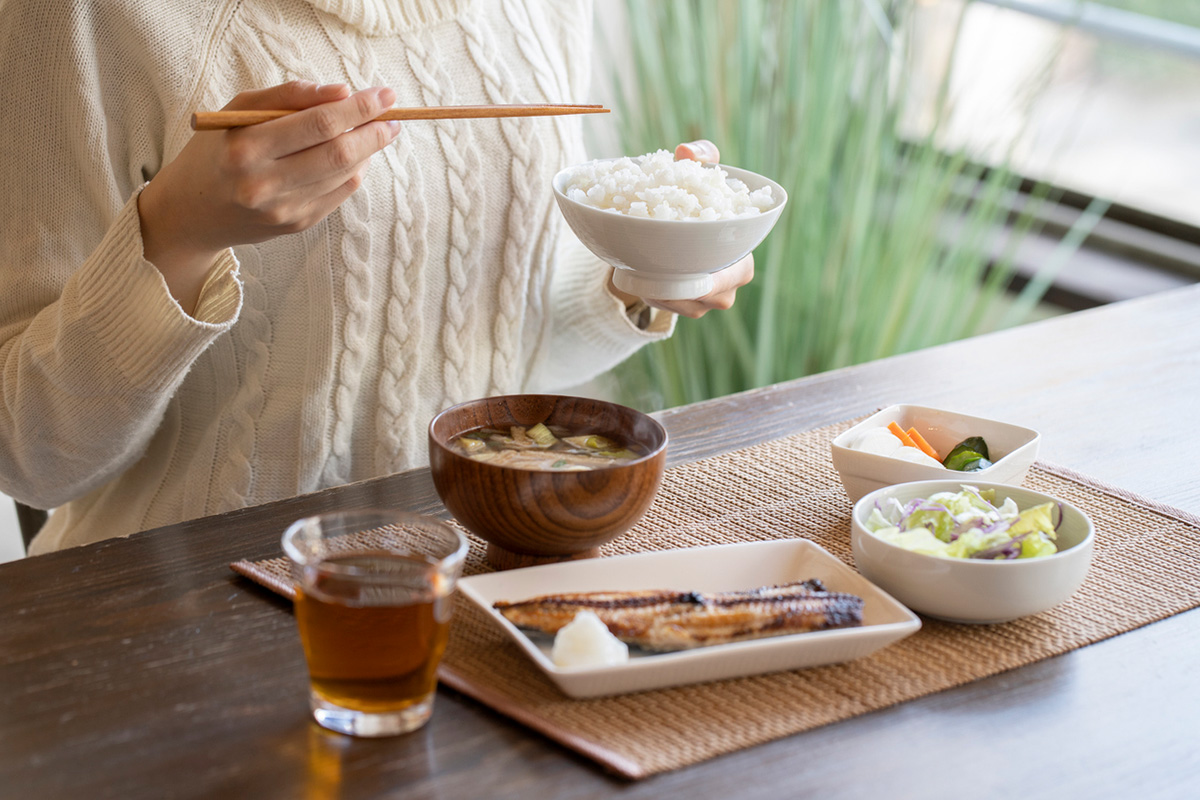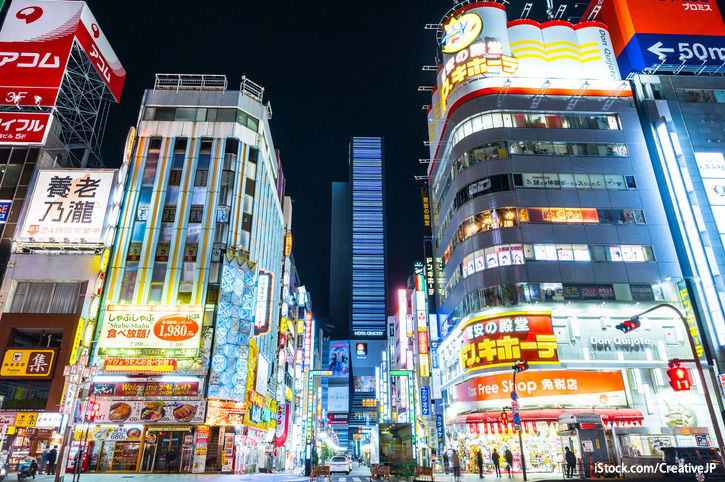Izakaya – How to Party in a Japanese Pub
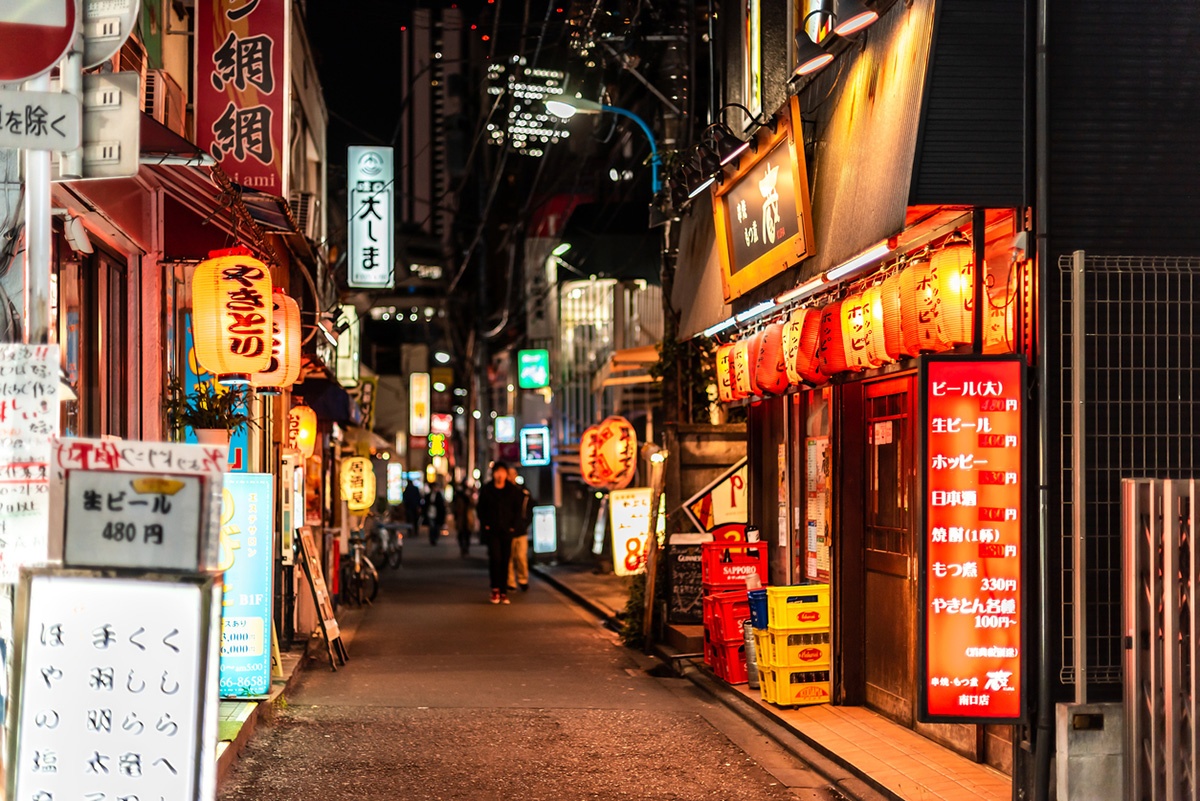
"Izakaya" are Japanese pubs famous for their wide selection of alcoholic beverages and local snacks. It's no wonder they're the number one spot for social gatherings with friends and colleagues! We'll explain what you need to pay attention to, especially in a business context.
In an Izakaya, people come together – whether it's for a farewell party, birthday celebration, or simply a cozy gathering with colleagues after work. They are often referred to as "Japanese pubs," but there is much more to them than just drinking alcohol. Alongside the obligatory beer (nama biiru) and soft drinks, there is typically a wide selection of cocktails, wine, and spirits. Traditional sake or fruity plum wine (umeshu) are also must-tries.
Moreover, Izakayas are renowned for their food offerings. The menu varies from restaurant to restaurant, featuring classic Japanese snacks like Karaage, Yakitori, and pickled items, as well as French fries, pizza, and other small dishes (otsumami) that complement the drinks well. Often, you'll find more adventurous dishes like hot pot stews (Nabe), sushi and sashimi, Okonomiyaki, or even Wagyu beef.
However, there is also a certain etiquette to observe in Izakayas, as they differ from regular restaurants not only in terms of their menu but also in their atmosphere. By following the points below, you'll be set for a fun Izakaya visit – which truly should be on every Japan traveler's to-do list!
1. Entering
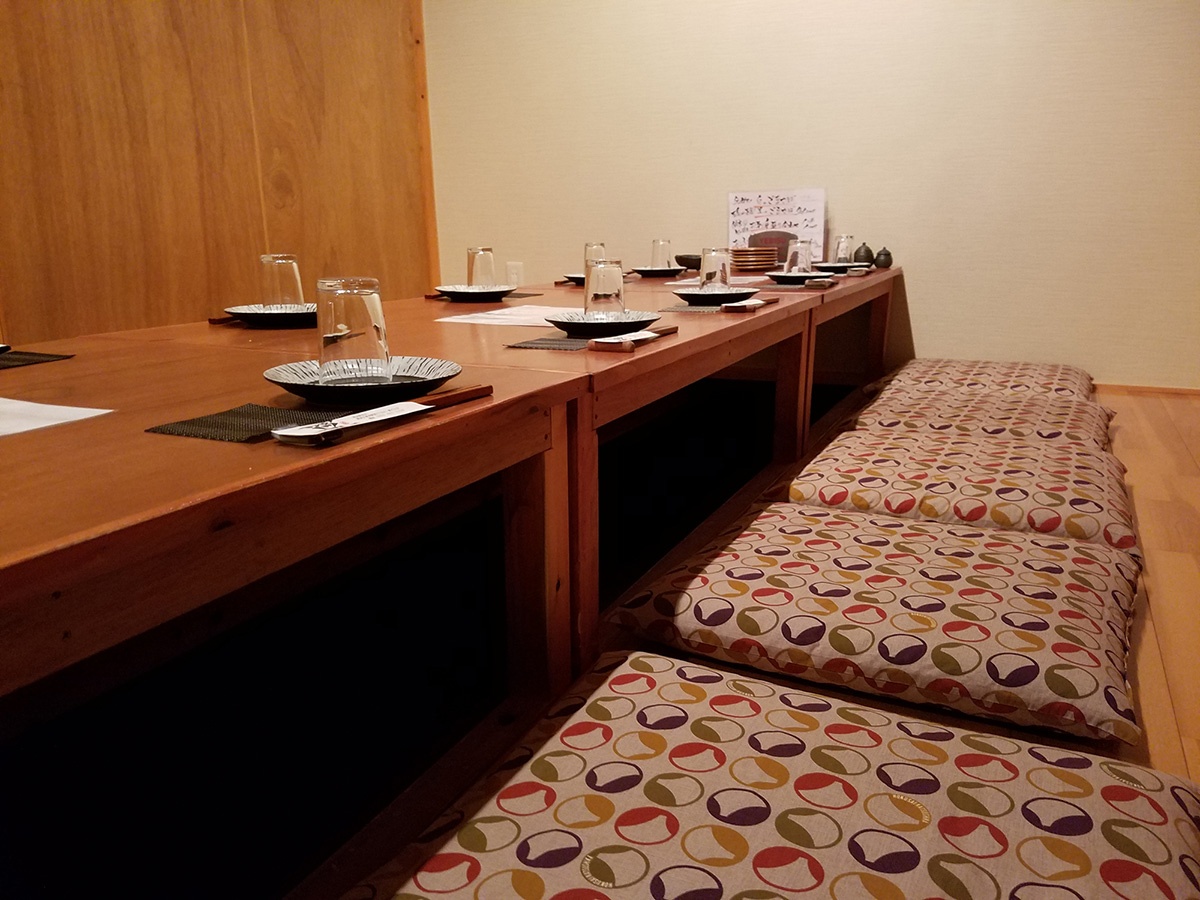
Let's start from the beginning: In many Izakayas, especially those in traditional style, you'll need to remove your shoes at the entrance. Usually, there are shoe lockers and slippers provided, or the staff will take care of your footwear. Afterward, you'll be escorted to your table (making a reservation, especially on weekdays, is recommended). Many Izakayas have regular tables and chairs, while others feature typical low tables with Tatami flooring and cushions. By the way, you don't have to sit on your knees (seiza) as this sitting posture can become very uncomfortable over time. In Izakayas, it's even encouraged to sit in a relaxed and comfortable position.
The tables are often separated from each other, either by simple curtains or thin partitions. Sometimes, you may even dine in a private room for more privacy. If you're with Japanese superiors, they might take a special seat (kamiza). However, there's no fixed location for it – typically, this "honorable place" is furthest from the entrance. So, pay attention to where you sit!
2. Ordering
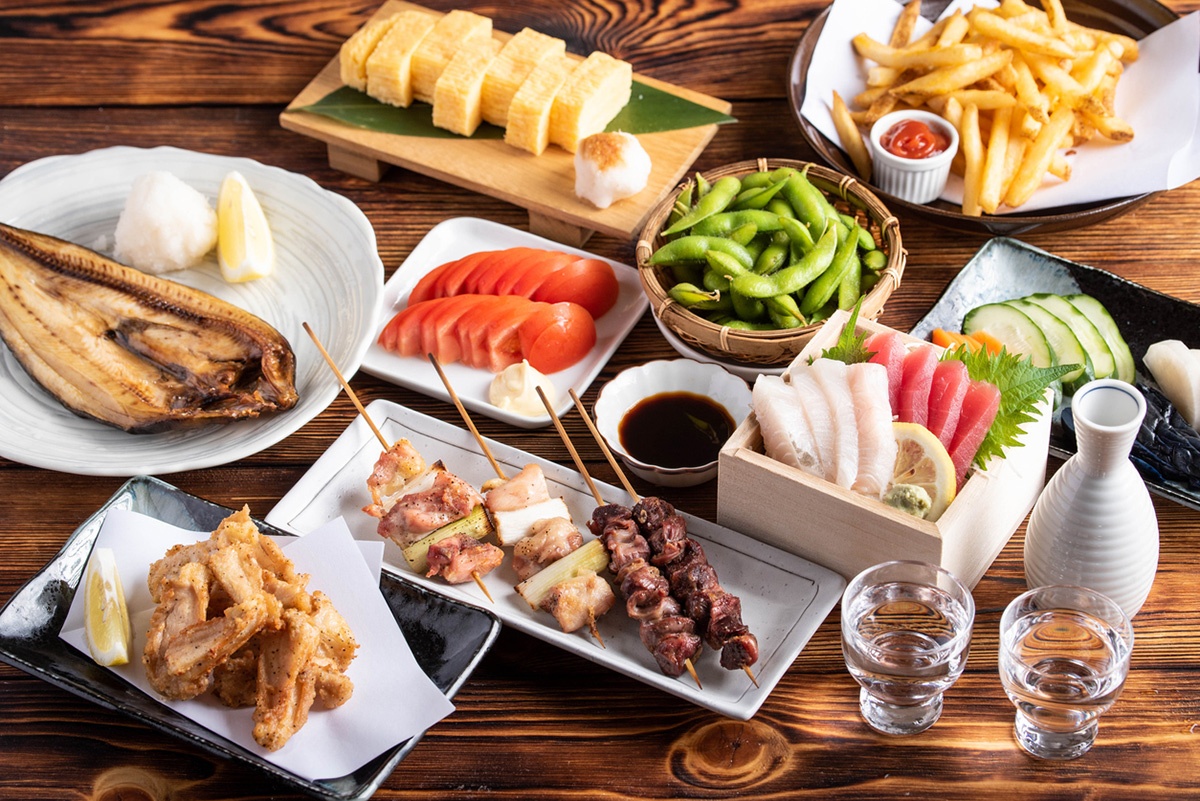
Once you've taken your seats, you'll be served a warm hand towel (oshibori) and a small appetizer (otōshi) first, such as a small salad, pickled vegetables, or cold tofu. Often, this is served without asking and is not free – typically, otōshi costs between 300 and 500 yen per person. Consider this as a kind of service charge instead of tipping, which is uncommon in Japan. However, in some Izakayas, you can indicate whether you want this appetizer or not.
In modern Izakayas, orders for drinks and food are now often placed through tablets on the table. However, before getting into the food, the first round usually consists of drinks (you can't go wrong with a classic beer, for example). After a toast, it's time to eat: all dishes are meant for sharing, so it would be impolite to claim a dish for yourself. Note: Many Izakayas set a time limit for guests (usually 2-3 hours)! Also, be aware of the "Last Order" time, after which no more orders are accepted, usually 30-60 minutes before the end of the time limit or closing time.
The menus are typically in Japanese, and especially in small or traditional Izakayas, you might encounter difficulties if you have limited Japanese proficiency – pictures of the dishes are not always included. However, in larger cities, there are increasingly English-language menus available.
3. Drinking
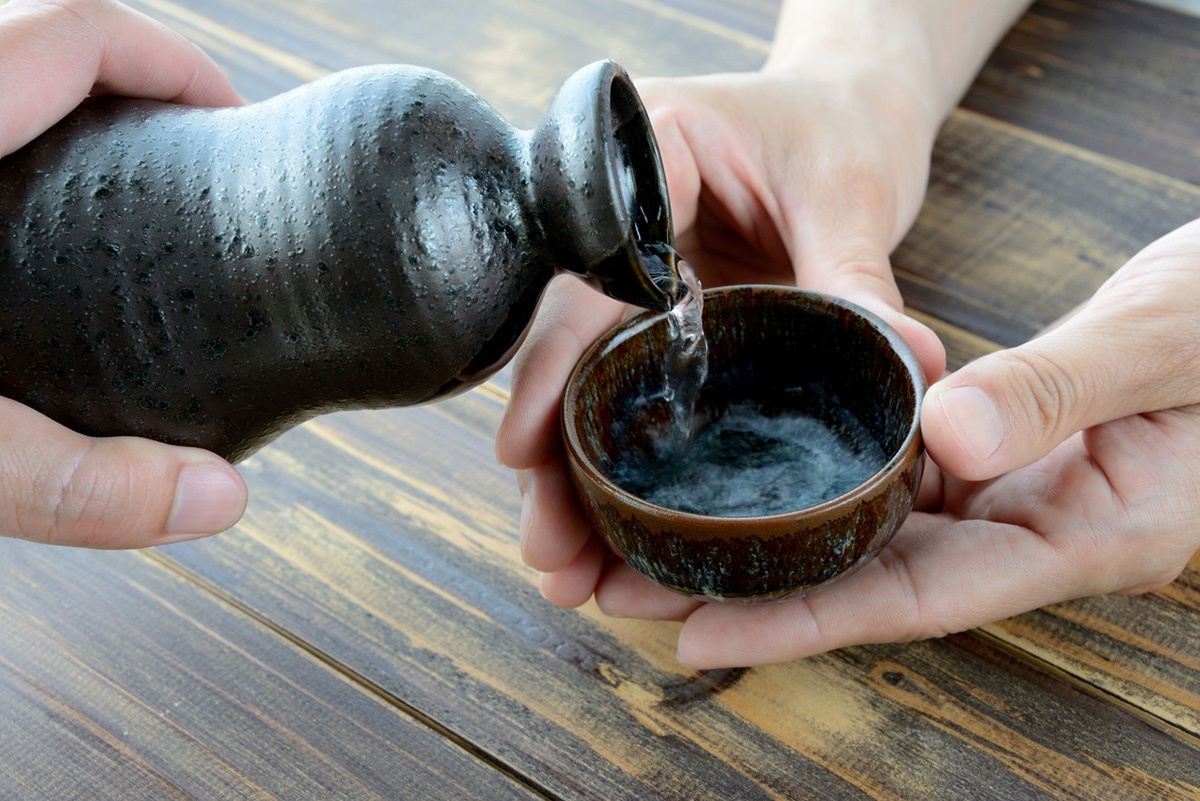
Now, let's get to the most important part: the social drinking party (nomikai) is the reason why people go to an Izakaya in the first place. Among friends or family, everything is usually casual and relaxed, but in a business context, there are a few customs to observe. If you're out with Japanese colleagues or superiors, you may encounter the so-called oshaku, deeply rooted in Japanese drinking culture.
During oshaku, people pour drinks for each other – usually beer or sake. This serves not only as a social icebreaker but also as a sign of mutual respect. The origin lies in Shintoism, where pouring sake is an important ritual, such as in weddings. Typically, it's the higher-ranking individuals who are the "recipients" of the alcohol, but it often goes around in a circle. Therefore, it's important to thank each time you're poured a drink and to reciprocate. If your glass is empty, simply pour some for someone else, and it won't stay empty for long!
Always hold your glass with both hands and don't just leave it on the table when someone pours for you; that's considered rude. However, you don't have to feel obligated to accept alcohol every time. You can politely decline or simply keep your glass full if you've had enough.
Tips for visiting an Izakaya:
- Compare prices before visiting an Izakaya, as many establishments offer All-You-Can-Drink/Eat deals where you can eat or drink as much as you want for a fixed price (usually from a set menu). This can save you a lot of money!
- If possible, don't stack empty dishes on top of each other. This makes it more difficult for the staff to transport and wash the dishes.
- Some Izakayas do not accept (foreign) credit cards. So, always have enough cash with you for emergencies!
- Tipping is not customary in Japan, so you don't need to worry about it. In the worst case, the staff may even chase after you to return your change!
- If you have to take off your shoes at the Izakaya, special slippers are provided near the toilets for you to wear for your visit to the restroom. Don't forget to take them off afterwards!
- There are numerous Izakaya chains in Japan: Watami, Torikizoku, Hana-no-Mai, Sekai no Yamachan, or Kin no Kura Jr. are among the well-known and more affordable restaurants.
This article has been translated from JAPAN DIGEST and published in English.
https://www.japandigest.de/alltag/verhalten/izakaya-etikette/


